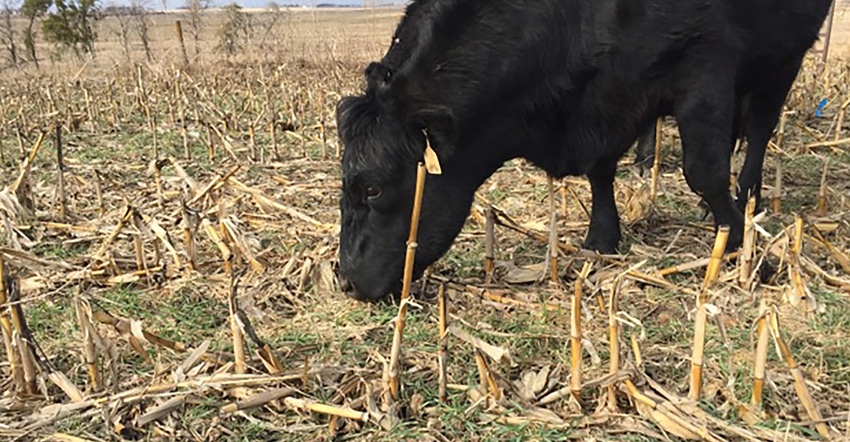May 12, 2017

The field day “Successful Cover Crop Use in Beef Production” was held at the Iowa State University Allee Demonstration Farm near Newell in northwest Iowa on April 27. Farmers saw the latest results of research aimed at finding the best ways to use cover crops in a cattle grazing system.
The focus, says ISU Extension field agronomist Rebecca Vittetoe, is to help farmers learn how they might integrate cereal rye as a cover crop with both stocker cattle and row crops. The three-year study is also exploring how grazing of cereal rye affects soil fertility and compaction.
“We know cover crops have benefit as green manure and can help improve soil structure,” said Vittetoe, co-coordinator of the project. “But can they also be grazed by cattle and still maintain these agronomic benefits?”
Nutritional value for cattle
Erika Lundy, beef program specialist with the Iowa Beef Center at Iowa State and project co-coordinator, says the project also is looking at nutritional aspects in the beef cattle diet related to the cover crop. “We are sampling the cereal rye to determine its nutritional value," she said. "Early in the growing season, the moisture content of the forage is very high, which limits total consumption by the animal." To counter the reduction in consumption and provide necessary minerals, 2.5 pounds of a distillers-based supplement are provided daily per animal.
Joel De Jong, ISU Extension field agronomist, said it’s important to think ahead. Some herbicides used earlier for the row crop may prevent successful establishment of the cover crop or prevent grazing of the cover crop for a period of time after establishment.
Mike Henderson, district conservationist with USDA’s Natural Resources Conservation Service, told field day attendees that in order to apply for crop insurance in northwest Iowa (Zone 3), the cover crop must be terminated at or before planting the cash crop. However, to reduce yield drag on the corn crop to be planted, ISU Extension agronomists recommend terminating cereal rye 10 days before planting.
Managing covers for grazing
ISU Extension ag engineer Mark Hanna told attendees that a proper planter setting is critical for the row crop. He advises placing the corn seed at a soil depth of 2 inches using down pressure to ensure consistency of seed placement, and having the disk openers set such that they would hold a piece of paper.
Many of the farmers attending the field day are already integrating their livestock enterprises into their row crop systems and using cover crops. The field day shared some insight on what’s been learned in the grazing cover crop project to date, and included feedback from producers on their successes and challenges. Speakers provided attendees with research-based information about how farmers can manage cover crops to get the most value out of them.
This grazing cover crop project is in year one of three and is being conducted at three of ISU’s outlying research farms in Iowa. Future field days are being planned to showcase cover crop seeding and establishment in the fall and logistical considerations with grazing cover crops. The project is funded by the Leopold Center for Sustainable Agriculture, Iowa State University Extension and the Iowa Beef Center.
Source: Iowa State University
You May Also Like




